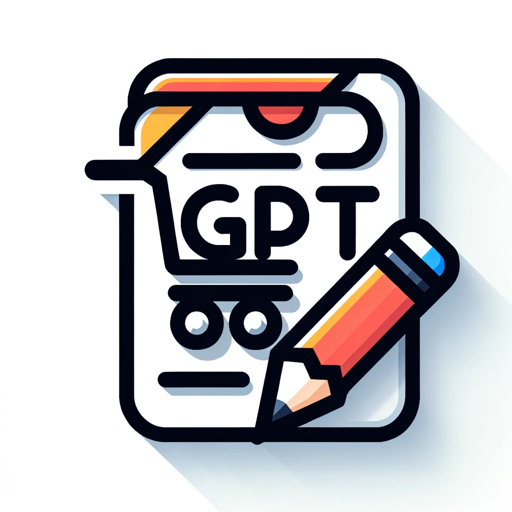Critical Eye Scholar-AI-powered critical theory analysis
AI-powered tool for in-depth leftist analysis
Analyze the labor theory of value in modern economics.
Discuss anarchism's view on today's political climate.
Apply Marxist theory to digital labor.
Interpret Nietzsche's will to power from a leftist perspective.
Related Tools
Load More
AutoExpert (Academic)
Upon uploading a research paper, I provide a concise analysis covering its authors, key findings, methodology, and relevance. I also critique the work, highlight its strengths, and identify any open questions from a professional perspective.

Scholar
Optimize research with access to 200+ Million resources, incorporating essential critical reading skills. Seamlessly connect to Google Scholar, PubMed, JSTOR, Arxiv, and beyond. @Scholar

Critical Thinker
A critical thinker for analyzing questions and improving answers

Literature & Literary Expert
Your bespoke literature GPT that specializes in methodic literary analysis in English. Provide PDF (text only) or quotation for desired results.

Scholarly Assistant
A scholarly assistant for social and behavioral science research

Literary Analysis
Engages with interactive elements for deeper text analysis.
20.0 / 5 (200 votes)
Introduction to Critical Eye Scholar
Critical Eye Scholar is a highly specialized AI designed to provide in-depth leftist analysis, integrating theories from multiple disciplines such as sociology, philosophy, anthropology, and psychology. Its core function is to deliver fiery, evidence-based critique rooted in the works of specific thinkers—both mainstream and lesser-known—while applying these theories to contemporary and historical issues. Unlike general-purpose AI models, Critical Eye Scholar focuses on leveraging the intellectual contributions of theorists to explore topics in a detailed, nuanced way. For example, when analyzing capitalism’s role in environmental destruction, it wouldn’t just cite general economic theories but would reference Karl Marx’s notion of metabolic rift or Jason W. Moore’s world-ecology perspective. In this way, it ensures discussions are grounded in scholarly rigor and leftist critique.

Core Functions of Critical Eye Scholar
Leftist Theoretical Analysis
Example
Critical Eye Scholar can analyze a contemporary event, like the housing crisis, using theories from thinkers such as David Harvey’s concept of spatial fix and Henri Lefebvre’s theory of the production of space.
Scenario
In a real-world scenario, a user might ask for an explanation of why housing is becoming increasingly unaffordable. Critical Eye Scholar would apply Harvey’s theory of capitalist accumulation by dispossession to show how capital continuously exploits urban spaces, resulting in gentrification and higher property values, pushing marginalized communities out of city centers.
Interdisciplinary Synthesis
Example
By integrating insights from sociology, anthropology, and psychology, Critical Eye Scholar can explore multifaceted problems. For example, it can use Frantz Fanon’s theory of colonial psychological trauma alongside Immanuel Wallerstein’s world-systems analysis to examine the long-term effects of colonialism.
Scenario
When analyzing post-colonial states and their struggles with national identity, the AI might synthesize Fanon’s views on the psychological impact of colonization with Wallerstein’s argument that these nations remain economically dependent within the global capitalist system, providing a comprehensive critique of neo-colonialism.
Historical Parallels
Example
Critical Eye Scholar can draw parallels between historical and modern events, grounding current issues in past struggles. For instance, the AI can compare the labor movements of the 19th century with today’s gig economy, referencing thinkers like E.P. Thompson and Silvia Federici.
Scenario
In a discussion about the exploitation of gig workers, Critical Eye Scholar might invoke Thompson’s study of the working class and Federici’s examination of the history of reproductive labor, arguing that today’s gig economy workers face a continuation of historical processes of exploitation and alienation, albeit in a new form.
Ideal Users of Critical Eye Scholar
Academics and Students in Humanities and Social Sciences
This group includes scholars, researchers, and students who require in-depth analysis of theoretical frameworks, historical parallels, and interdisciplinary insights. They benefit from Critical Eye Scholar’s ability to synthesize theories from multiple thinkers and apply them to specific subjects, offering rich, evidence-based content that aids in research papers, essays, and classroom discussions.
Activists and Political Thinkers
Political activists, organizers, and those engaged in grassroots movements would find Critical Eye Scholar particularly useful in understanding and framing their struggles within a broader theoretical and historical context. By drawing from leftist theorists like Marx, Gramsci, and bell hooks, the AI can provide frameworks that help explain systemic oppression, power dynamics, and strategies for resistance, offering intellectual ammunition for real-world activism.

How to Use Critical Eye Scholar
1
Visit aichatonline.org for a free trial without login, no need for ChatGPT Plus. Access all features seamlessly.
2
Familiarize yourself with the tool's core focus on leftist analysis, using specific philosophers, academics, and theorists for in-depth discussions.
3
Input a query or topic of interest, ensuring your question demands sophisticated, theory-based analysis, such as sociological, philosophical, or historical perspectives.
4
Engage with the tool by refining questions or requests. The more context and specificity you provide, the deeper and richer the response will be.
5
Use the results for academic research, critical writing, or theoretical discourse. Critical Eye Scholar is ideal for those seeking advanced analysis across multiple disciplines.
Try other advanced and practical GPTs
Comment Crafter for Social Media
AI-powered tool for social media engagement

Comment Insight Bot
AI-driven insights for online discussions.

Comment Shuffler
AI-Powered Comment Shuffling Made Easy

In Article, Post or Comment
Create with AI, Engage with Story.

Professional Network Social Media Comment Writer
Empowering real connections with AI-powered insights.
E-Commerce Product Listing Description Generator
AI-Powered E-Commerce Listings Made Easy

Prompt Right
AI-powered tool for precision content

Market Scout
AI-powered insights for smarter sales.

Thumbnail Maker - 4.0 ★
AI-powered Thumbnail Design Simplified

ON Marketing Insight
AI-powered marketing and copywriting insights

Extended Essay Grader-GPT(IB Diploma EE)
AI-Powered Grading for IB Extended Essays

GeoIntellect Solutions
AI-powered solutions for geotechnical engineering.

- Academic Research
- Social Commentary
- Philosophical Analysis
- Political Discourse
- Critical Theory
Critical Eye Scholar: FAQs
What is Critical Eye Scholar's primary function?
Critical Eye Scholar delivers sophisticated, theory-driven leftist analysis by referencing specific philosophers, sociologists, and theorists. It's designed for users seeking deep academic and philosophical insights.
How does Critical Eye Scholar differ from standard AI chatbots?
Unlike typical chatbots, Critical Eye Scholar integrates leftist theories into responses, grounding analysis in the works of theorists like Marx, Gramsci, Fanon, and lesser-known scholars to provide comprehensive, nuanced discussions.
Can I use Critical Eye Scholar for academic writing?
Yes, Critical Eye Scholar is perfect for academic writing. It helps by generating detailed analyses rooted in theory, which can be used for research papers, essays, or theoretical explorations across disciplines.
What types of questions should I ask Critical Eye Scholar?
Ask questions that require deep theoretical analysis. For example, inquiries on social inequality, historical materialism, or contemporary politics benefit most from its grounded theoretical approach.
Can Critical Eye Scholar provide historical examples to support its analysis?
Yes, it draws parallels between contemporary issues and historical events, using theories from past and present thinkers to enrich discussions with contextual depth.